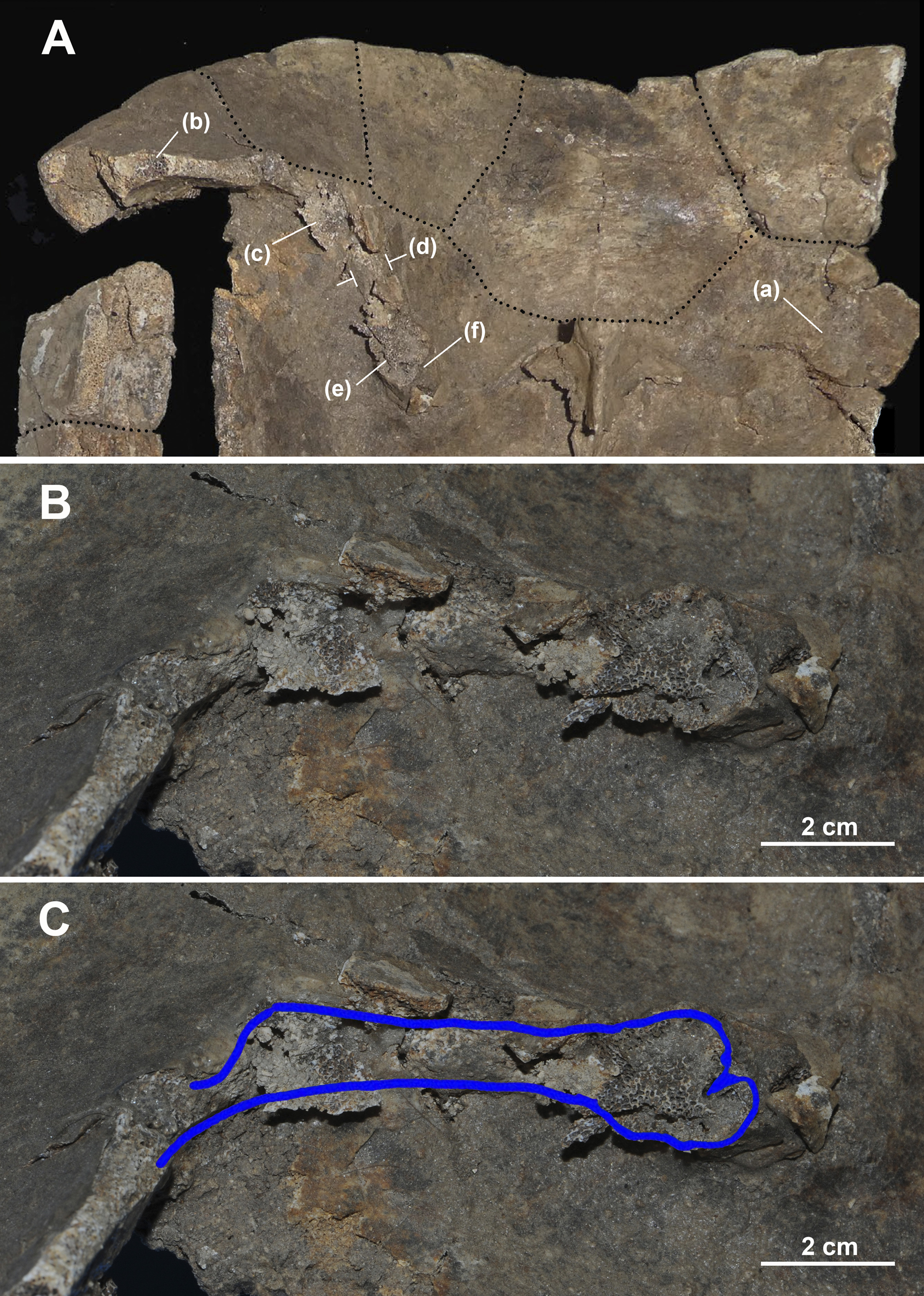
|
||
|
The anterior bridge strut suture between the plastral bridge element and the carapace in the holotype of Elseya lavarackorum (QMF24121). A Ventral (internal) view of the carapace showing the strong angle of the anterior bridge strut suture against the rib element of pleural bone 2, and the prominent anterior bridge strut elements still embedded in the suture; B an enlarged view of the region of the suture showing more clearly the breaks that were formed when the carapace was separated from the plastron and the resultant overhangs (labelled (c) and (e) in A above); C the boundary of the anterior bridge suture as interpreted by Joseph-Ouni et al. (2022). Note that they have selectively excluded and included plastral elements in their boundary definition [(c) and (e) of A]. Note also that major portion of the suture is not included in their interpretation [(f) of A]. Their boundary of the terminal end of the suture represents the boundary of the shape of the break between the anterior bridge strut and the residual elements of that strut embedded in the suture, not the shape of the anterior bridge strut suture. |